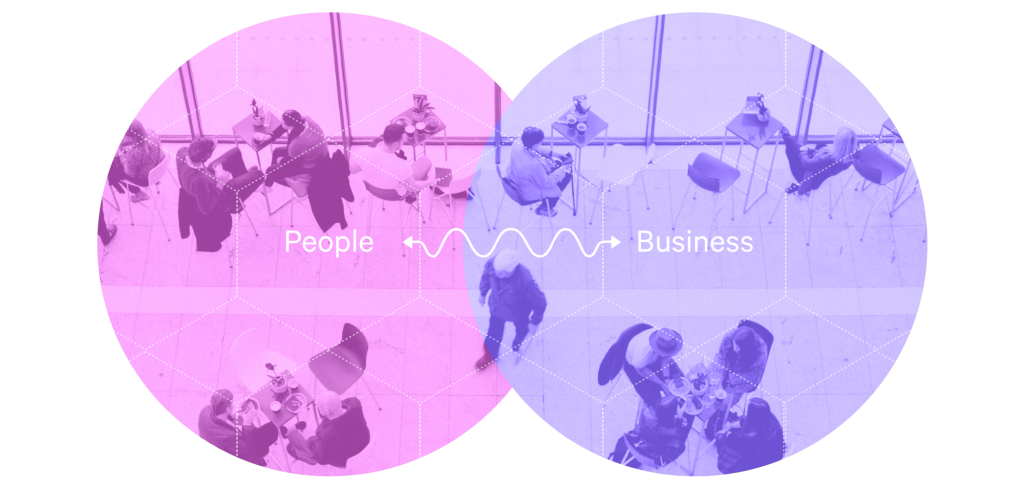How to use Research to shape your Brand
Product Research and a smarter notion of Brand can help you focus on the relationship with your audience and make the needle move.

At Moze we work close knit with startups and forward-looking companies to help their digital products and services take off.
While helping our clients validate early stage ideas or improve their product, we found companies often struggle with discovering who their customers are and what is that they really need.
While they are focused on getting the next investment round go through or meeting a major development milestone, lots of untested assumptions pile up and silently spread across the team.
In the meantime analytics data gets flat, or behaves in a fashion not easy to understand. Evidence starts to show it’s time to try something different.
“No business plan survives first contact with customers”
— Steve Blank
What follows summarizes our approach to helping companies focus on the real needs of their customers, connecting the dots between the methodologies we found effective along our journey as a digital product design studio.
Start by talking with your customers
We learnt a proficient relationship between a company and its audience starts with an introduction, just like any other relationship.
Where to start
Gathering feedback from existing or potential customers, inviting them over for an interview, is often a good place to start.
In case you are still figuring out who your customers might be, try reaching out to people in your network, workplace or groups of interest.
Research techniques can help the conversation focus and provide a structure your team can use to turn that knowledge into action.
Get the full picture
While quantitative data tells you how your customers are behaving, qualitative research will help you uncover which needs drive their behavior.
Combining these two outlooks will enable you to acknowledge what elements of the value proposition are foundational towards establishing a solid bond with your audience.

Work in short cycles
With time and budget always being a constraint, working in short cycles will help you keep Research sustainable and effective.
Design Sprint is an example of one of the different tools we use at Moze to help our clients get insights from customers quickly.
Developed at GV (formerly Google Ventures), the process facilitates your way to building a prototype of your idea and testing it with real customers in just five days.
The workshop provides a wealth of information and helps you act upon it, making clear whether you should iterate, innovate or change focus.
Read more here about how we kick off new projects with a Design Sprint.

Think of your Brand differently
In the words from Jeremiah Gardner’s book about Lean Branding, the relationship you have with your customers is what your Brand really is; not your logo, colors or typography.
Why your Brand is not your logo
As human beings it’s through relationships that we naturally interact with the world around us, developing feelings, affections, biases, and associations. The same goes when we deal with the organizations we choose or we purchase from, the author points out.
“A brand is a relationship between an organization and an audience.”
— Jeremiah Gardner, “The Lean Brand”
A Lean approach to Branding
Traditional Brand development, born in the circumstances of the rising industrial production, focuses on the creation of a set of deliverables: brand promise, mission statement, visual identity, and so on.
This linear approach is less viable today, in a context where the ability to adapt is crucial to enable innovation, especially in the case of digital products and services.
Working with Research iteratively, you’ll be able to test your assumptions in short cycles and understand what kind of progress your customers are trying to achieve using your product.

Find your focus
This knowledge will help you to shape your messaging, touchpoints and every external artifact of your Brand to reflect what really resonates with your audience.
Combining this perspective on Branding with other tools —such as GV’s Three-Hour Brand Sprint— we work with our clients to build an hypothesis of Brand (Minimum Viable Brand, or MVB) in two days.
In those two days we focus on nailing the elements of functional and emotional value that make the relationship meaningful.
Fail fast, and cheap
Based on that hypothesis, we run quantitative and qualitative validation experiments (Lean Experiments) to test out our assumptions.
Experiments range from A/B testing a social media campaign to interviewing customers to get reactions on two contrasting ad copy.
The creation of every experiment and every artifact produced to run them (e.g. campaigns, landing pages, etc.) is fueled by our MVB.
To keep the process efficient experiments are run simultaneously in a fixed timeframe (usually two weeks).
Measure it
We then learn and iterate until clear patterns emerge, unveiling which areas are worth focusing on and which ideas can bring more value.
Of course nobody wants this to stay in theory. The whole process, and hence the overall time and budget, is tied to influencing a specific KPI.
“If one does not know to which port one is sailing, no wind is favorable.”
— Lucius Annaeus Seneca
Focus and adapt
Once you’ll have identified what’s core in your relationship with customers, you’ll be able to reduce waste and focus your resources with confidence to hone their experience.
Don’t stop
In a fast changing ecosystem of new products and innovations it’s important to keep listening to what makes customers thrive or struggle to make sure they don’t switch away to another solution in the long run.
That’s why you should make Research part of your process and mindset, to increase your ability to adapt.
Get everyone on board
Don’t let your Research findings get lost in a report: your whole team can and should partecipate in the process. Using Research tools will also make it easier to share what you learn effectively with stakeholders and get them on board.